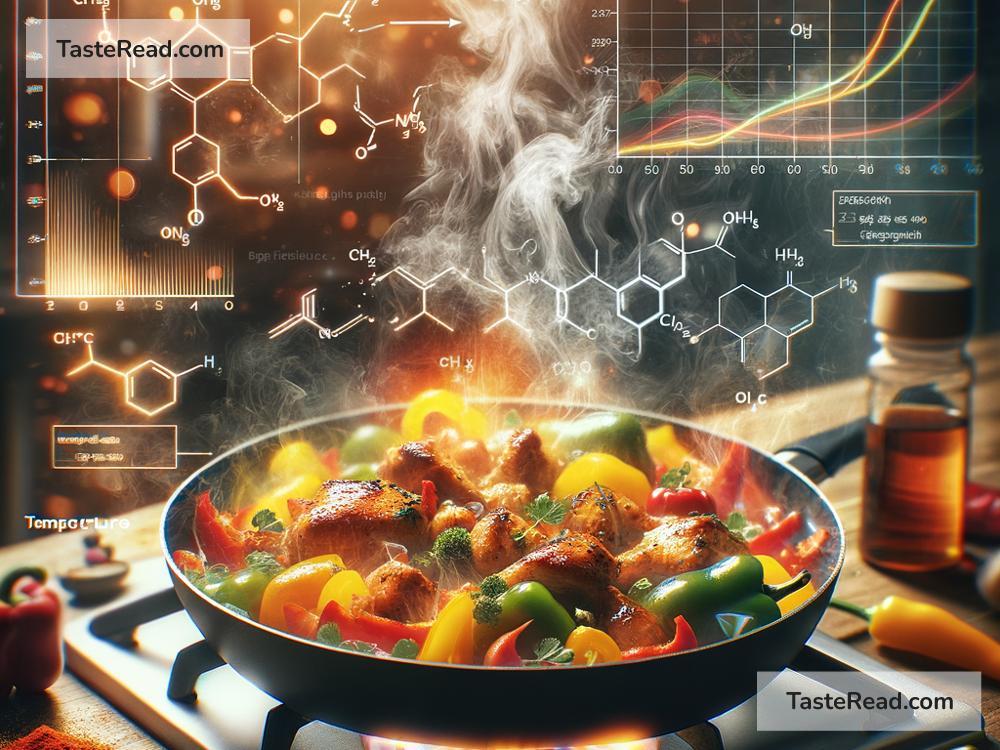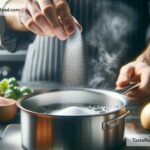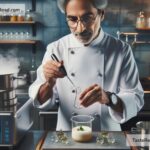The Science of Cooking with Chemical Kinetics: Techniques and Tips
Cooking is more than just tossing ingredients into a pot and waiting for them to transform—it’s like conducting chemistry experiments in your kitchen. Every dish relies on chemical reactions, and understanding these reactions can help you cook smarter and tastier meals. One area of science that’s especially important in the kitchen is chemical kinetics, the study of how fast chemical reactions happen.
In this article, we’ll explore how chemical kinetics applies to cooking and share simple techniques and tips that will improve your culinary skills. By the end, you’ll understand how timing, temperature, and mixing can make a huge difference in your dishes.
What is Chemical Kinetics?
Chemical kinetics sounds complicated, but the concept is simple: it’s all about the speed of reactions. For example, when you bake cookies, proteins in the dough break down, sugars caramelize, and flavors develop—all because of chemical reactions. Some happen quickly (like the bubbling of baking soda in pancake batter), and some take hours (like braising meat until it’s tender).
In cooking, you control the speed of these reactions through temperature, time, and ingredients. By managing these factors, you can bring out the best flavors, textures, and aromas in your food.
The Role of Temperature
Ever wondered why food cooks faster at higher temperatures? Heating food speeds up its chemical reactions. This is why boiling, frying, or baking are much faster than slow, cold preparation methods like marinating or fermenting.
Here’s a basic rule of kinetics: when you increase the temperature, the molecules in the food move faster, collide more often, and react quicker. But be careful! Heating food too much or too quickly can lead to burnt or dried-out dishes. The key is finding the balance between speeding up reactions and maintaining the quality of the food.
Techniques and Tips:
- Preheat Your Oven: If your recipe calls for baking, always preheat. Starting with a hot oven allows reactions (like browning or puffing) to begin immediately, creating a perfect crust or rise.
- Low-and-Slow Cooking: For dishes like pulled pork or stews, lower temperatures over a longer time allow more complex flavors to develop. Tough proteins break down, and the result is tender meat.
- Searing for Flavor: High heat causes the Maillard reaction—a chemical reaction between proteins and sugars that creates a browned, flavorful crust. When searing steak or sautéing vegetables, avoid overcrowding the pan to ensure even heat and faster reactions.
Timing is Key
Chemical kinetics teaches us that the length of time food spends cooking affects how far the reactions go. For example, leaving caramel on the stove too long can cause it to burn, while undercooking a roast can leave it chewy and tough.
Some reactions need just the right amount of time to happen. For instance:
– When making pasta, cooking it “al dente” ensures that the starch hydrates properly while the texture stays firm.
– Allowing bread dough to rise for the right duration gives yeast enough time to create air bubbles, making the bread fluffy.
Techniques and Tips:
- Use a Timer: Never rely on estimates alone. Set a timer to avoid over- or under-cooking.
- Rest Meat After Cooking: After roasting or grilling, let meat sit for several minutes to allow juices to redistribute. This is the result of chemical reactions continuing even after the heat source is removed!
- Don’t Rush Rising Dough: Yeast needs time to ferment sugars and produce carbon dioxide. Rushing this step can result in dense bread.
Mixing Matters
Another way to influence reaction speed is through mixing or stirring. Stirring speeds up reactions by evenly distributing heat and ingredients.
Imagine making pancake batter. If you stir too little, lumps of flour remain, creating uneven cooking (some parts burn while others stay raw). If you overmix, you can activate gluten in the flour too much, leading to heavy, rubbery pancakes.
Techniques and Tips:
- Fold Gently in Baking: When making cakes or muffins, don’t overmix the batter. Folding gently helps keep it airy and avoids over-developing gluten.
- Stir Frequently in Sauces: Continuous stirring prevents the ingredients from separating or burning. For example, stirring béchamel sauce stops clumps from forming.
- Whisk for Emulsions: If you’re making mayonnaise or vinaigrette, whisking helps blend oil and water-based substances into a smooth, stable mixture.
Mastering Chemical Kinetics in Cooking
Here’s a summary of how you can use the science of chemical kinetics to cook better:
1. Control temperature: Adjust heat for faster or slower reactions.
2. Manage time: Don’t rush or delay cooking steps.
3. Mix correctly: Stir, whisk, or fold based on the dish you’re making.
By mastering these techniques, you can prepare meals that are cooked perfectly every time. You don’t need fancy tools or a science degree—just a basic understanding of how and why reactions happen in food.
Cooking as Science and Art
Chemical kinetics in cooking isn’t just about science; it’s about creativity, too. Once you understand how temperature, time, and mixing influence reactions, you can experiment with new techniques. Maybe you’ll discover a faster way to caramelize veggies or invent a new marinade that tenderizes meats overnight.
At the end of the day, science is a tool that can make you a better cook—but it’s your passion for food and flavor that turns science into magic. Whether you’re charring a steak or slow-cooking a stew, pay attention to the reactions happening in your kitchen. With practice, you’ll not only cook smarter but also enjoy the process of watching science—and delicious food—come to life.
So next time you’re cooking, think about the invisible chemistry happening inside your pot or pan. You’re not just making dinner—you’re conducting experiments to create something amazing. Bon appétit!


